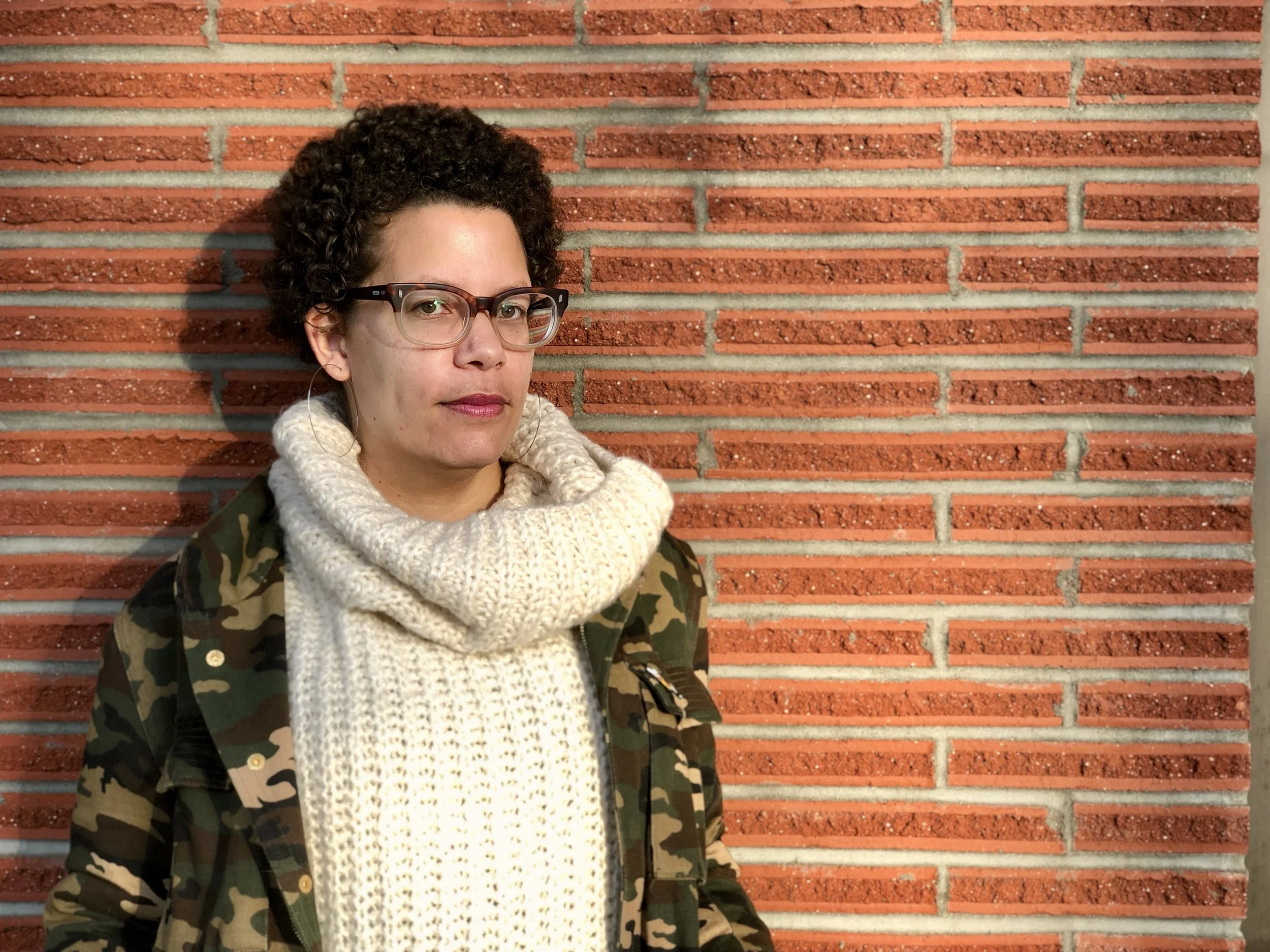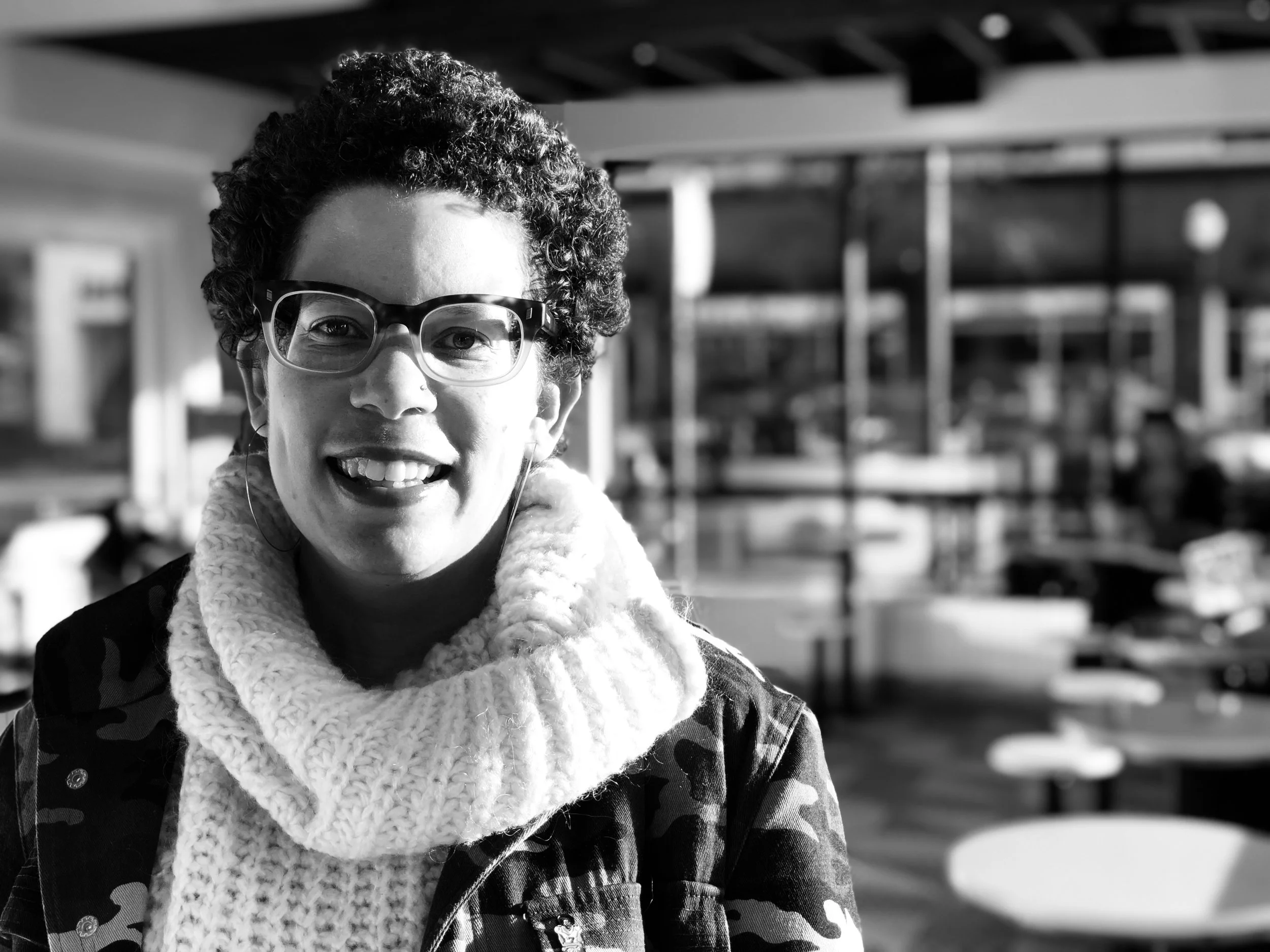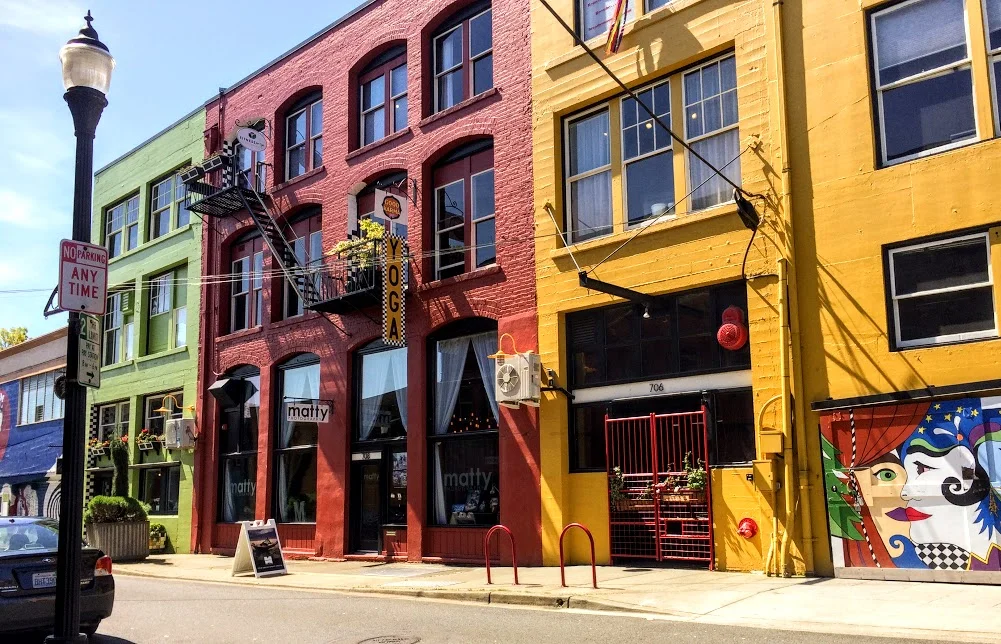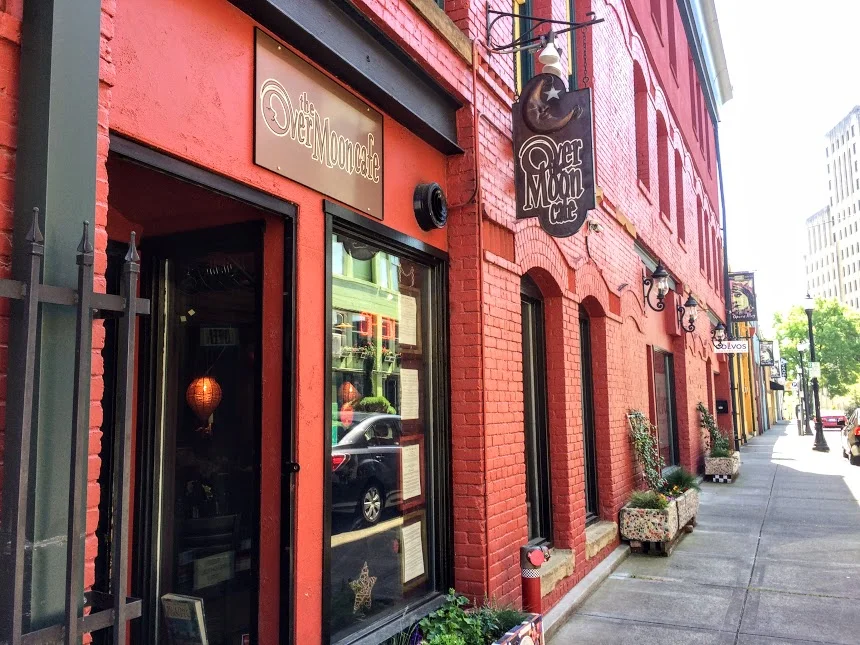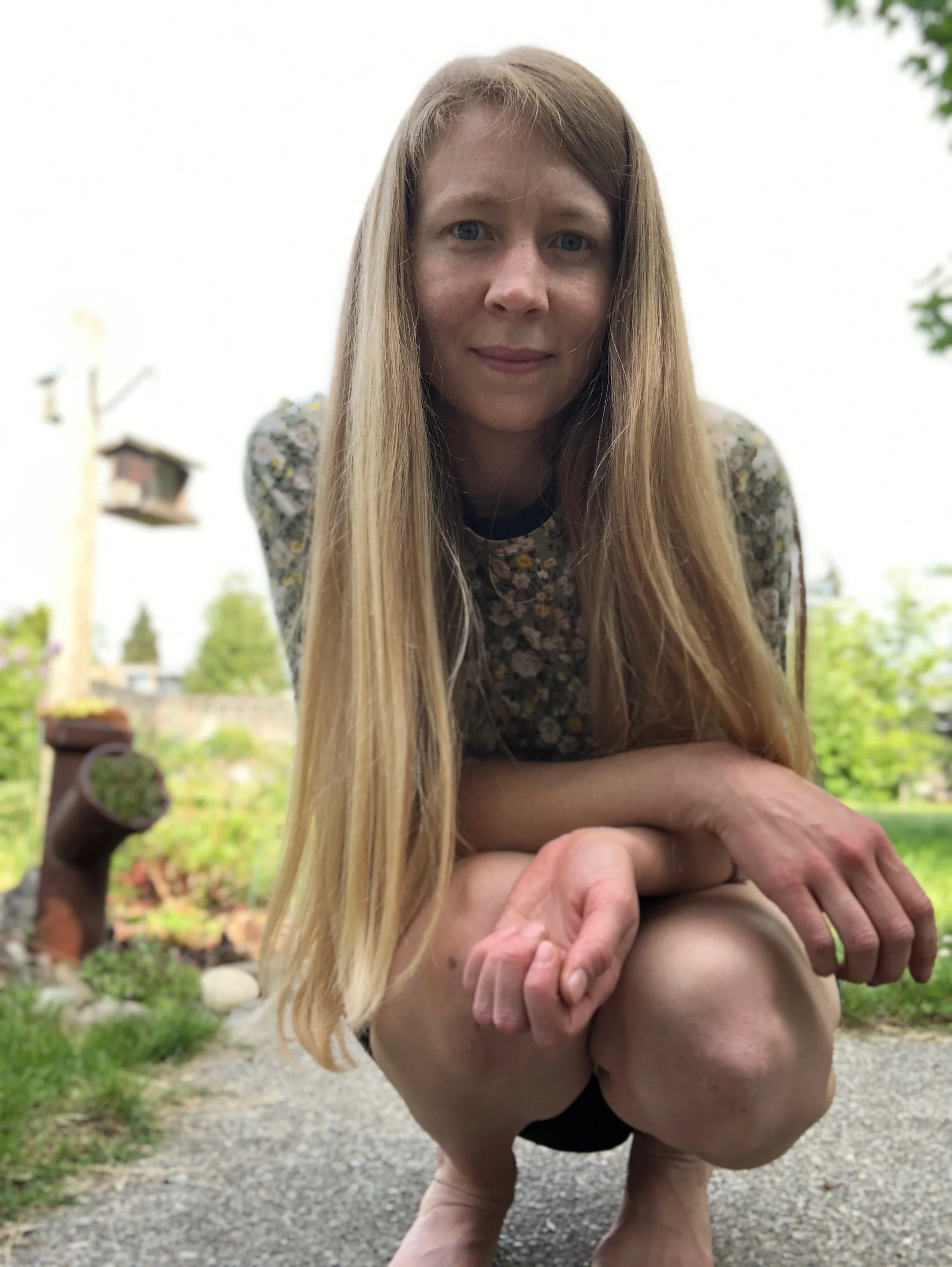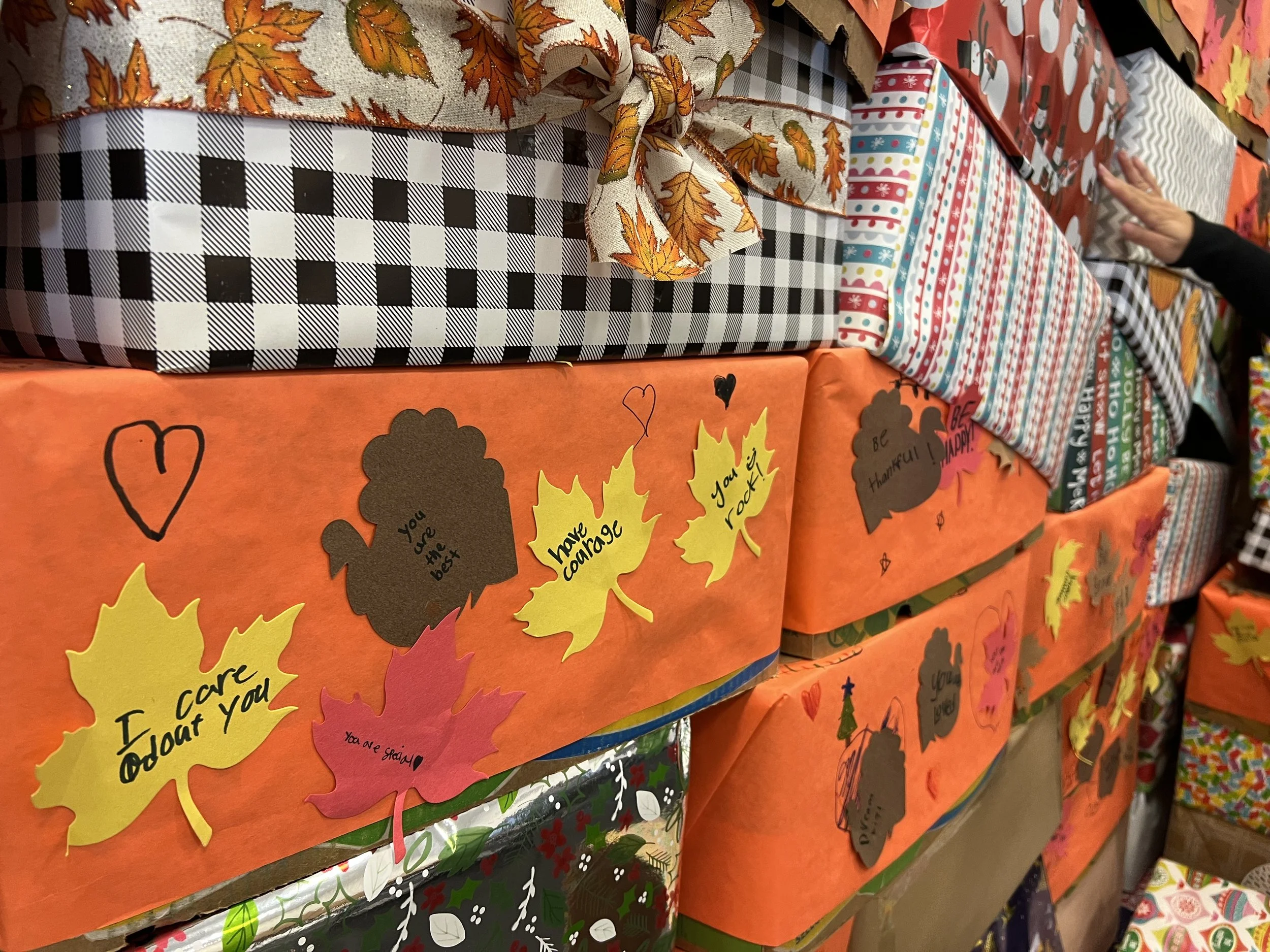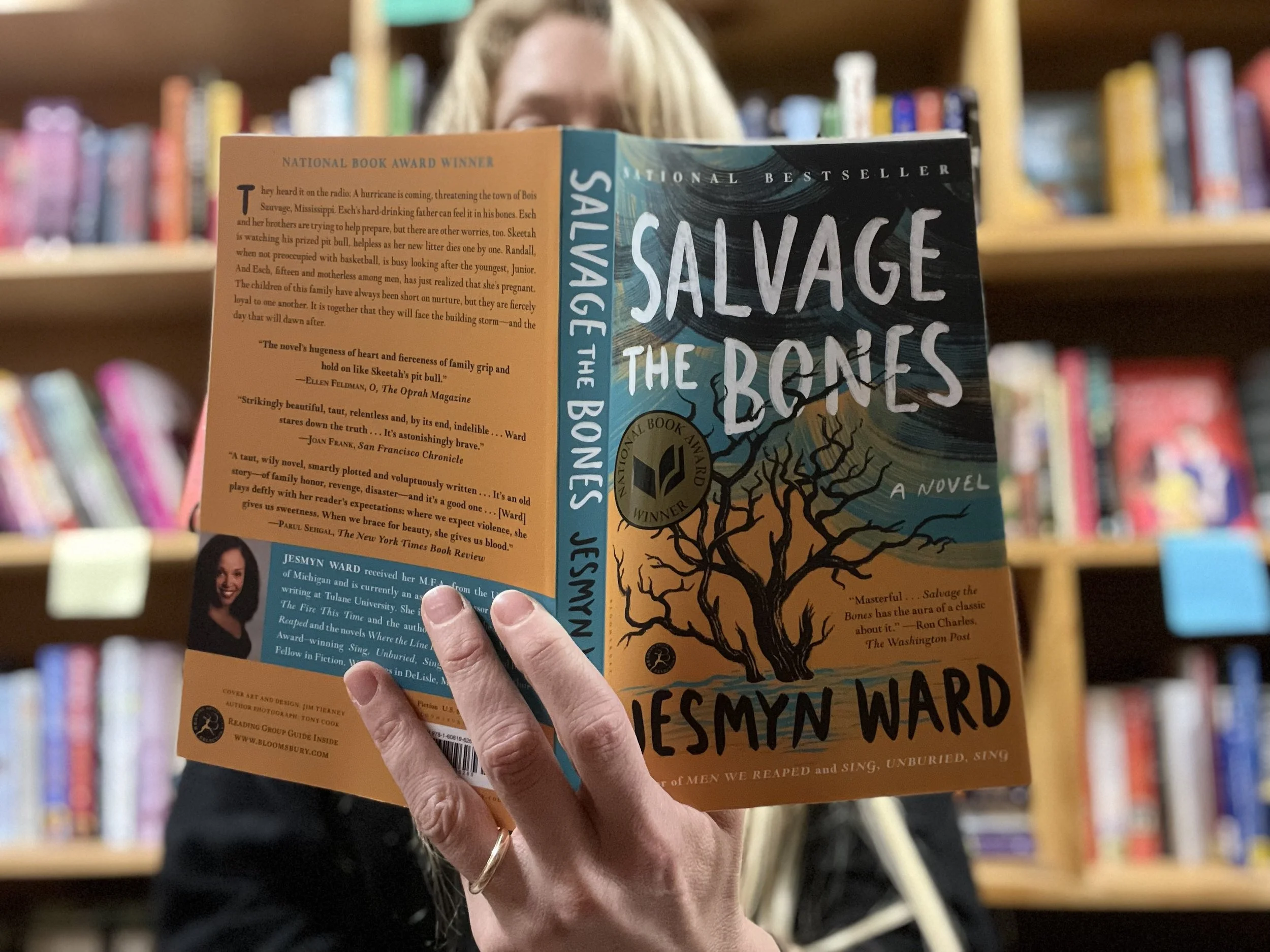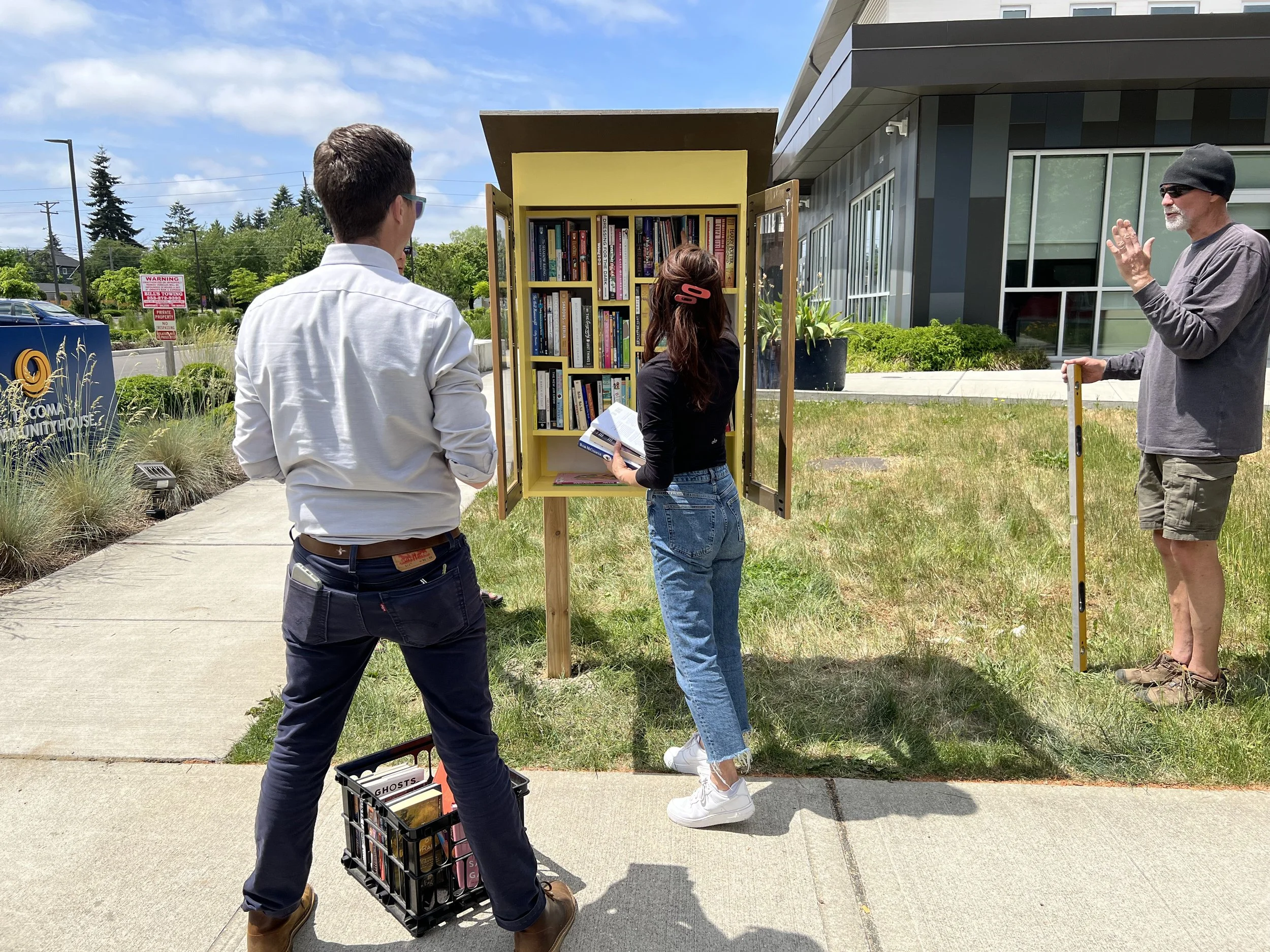Meet Kim
When I first met Kim I was struck by her energy, her humor, and her warmth. She is thoughtful, reflective, an examiner. But the work isn’t just going on in her powerful mind. She is active! Take a look at the work she does, and then we’ll move into her Tacoma story, thoughts about gentrification, concerns about our city, and things she loves about it too.
As Kimberly Thomas, M. Ed. says herself, “I’ve always been in education.” It all started with her own education growing up in Tacoma’s public schools, continued through her experience as a first-generation college graduate, and onward through her completion of a Master of Education in Multicultural Education. Kim works as a Partnership Director for Equal Opportunity Schools a non-profit where she guides conversations about racial equity, implicit bias, and institutionalized racism. Kim is the Founder and Owner of empower! College Advising Services, where she is on a mission to guide Tacoma and Pierce County students through the college search process.
Image from Over Tacoma - Lincoln High
A Tacoma Childhood
I think it’s important to establish Kim’s roots here, so that we can better hear what she has to say as we continue the conversation. Kim’s Tacoma journey started at age 6 when she landed in Tacoma with her army parents.
“My brother and I were both born in DC. So, I say that I’m DC born, but Tacoma bred. The first place we lived in Tacoma was actually Parkland.” Kim started school at James Sales Elementary School where their mascot is the Giraffes, “which is like the cutest thing in the world,” says Kim. True.
“I’m DC born, but Tacoma bred.”
After a little while the family moved to the house where Kim would grow up on S. 70th & G St in Tacoma’s South End.
Eventually, Kim became a student at Lincoln High School, “the Lincoln High School.” Kim has a lot of love and appreciation for Lincoln, and she’s really excited about the kind of school it is, but she points out “I went to Lincoln in the ‘90s when nobody sent their kid to Lincoln. You sent your kid to Lincoln because you had no other choice, because you were poor.”
Image from University of Puget Sound
The point is, Kim’s been around Tacoma long enough to see some things change, to watch, to worry, to support, and to criticize.
Kim attended the University of Puget Sound and graduated in 1999 (Loggers! Fine, but not as cute as the Giraffes). Eventually she got her first Tacoma apartment on N 5th and I for $365/month. I’m a couple of years behind Kim in time and experience, but we both remembered those first apartment times, times of walking to The Grand and renting movies at Stadium Video (may it rest in peace).
“I worked with kids from both the Hilltop and Salishan and that’s really where I cut my teeth on working with young people and being interested in college going.”
This is when Kim’s work in education started. “My very first job in education was here in Tacoma. I worked for a federal grant program that’s still around, it looks a little different now, called Gear Up. And I would split my time between People’s Community Center on MLK and Portland Avenue Community Center on the Eastside, so I worked with kids from both the Hilltop and Salishan and that’s really where I cut my teeth on working with young people and being interested in college going.” Years later, these two work locations would come back to influence where Kim and her partner would choose to settle.
“I think one thing that I don’t like, something that I’m nervous about is this; the increase in the lack of accessibility for people who look like me...”
Kim on Homeownership in Tacoma
“And eventually we decided we were going to buy a house, which is something - by the way - I never, ever, ever, ever thought I wanted or would do, ever. I’m still on the fence about homeownership, by the way. I’m like, is this cool? I’m not sure it’s cool all the time.”
After living in Seattle for 10 years, getting her graduate degree at UW and working at Seattle University, Kim and her partner, Dan, were trying to figure out where they were going to live.
“And Seattle was not a place we could afford. At all.”
One day, Kim and Dan drove down to Tacoma to watch Kim’s niece play basketball at, you guessed it, Lincoln High. “And as I’m just driving to Lincoln, you know, Dan is like ‘Huh! What’s Tacoma?’ Right? And I’m like, ‘It’s pretty cool.’ And it’s not that I’ve been a person that’s like ‘I don’t want to be in Tacoma. Gross Tacoma.’ Never. On the contrary, I’m quite pissy when people do the ‘gross Tacoma’ thing, and will speak up when people do it.” We appreciate that, Kim!
That day, they settled on Tacoma as the place they would live if they stayed in WA, and they did stay. At first, like many of us, they moved from one apartment to another.
“And eventually we decided we were going to buy a house, which is something - by the way - I never, ever, ever, ever thought I wanted or would do, ever. I’m still on the fence about homeownership, by the way. I’m like, is this cool? I’m not sure it’s cool all the time. But we were really deliberate about where in Tacoma we wanted to live.”
You remember how Kim’s first job in education had her working in the Hilltop and on the Eastside. Turns out, she was ready to get settled back into those roots.
“So Dan and I share, you know - very much share - a worldview about community and the kinds of community we want to live in, the kind of communities we want to support, the kind of communities we’re not interested in supporting. So, pretty much, after that conversation, what was left was the Hilltop or the Eastside. The Southside being left out because I grew up there and…I’d always wanted to live in the Hilltop anyway. We spent some time on the hill when we were still living in apartments and really enjoy just the history of Hilltop, its racial history, the sense of community there. The sense of resilience is really important to me…We were represented by the honorable Michael Duggan and moved into our house on L St, on August 1st of 2017.”
“Last summer, 2018, when we celebrated our one year annivesary in our house, we could not have afforded our house.”
This is how we got to know Kim. She and Dan bought a house with Michael, and we’re grateful to have played this part in their story, and we’re also completely okay with making public these concerns about homeownership, about affordability, and about gentrification, because communication is the whole point of the conversation. And we share these concerns.
Kim continued, “What I can say is, if Dan and I were looking for a house now, we could not afford our house. That is stunning. Last summer, 2018, when we celebrated our one year annivesary in our house, we could not have afforded our house. If we had looked one year later, we could not have afforded our house, and that is pretty sobering. I think one thing that I don’t like, something that I’m nervous about is this; the increase in the lack of accessibility for people who look like me, people who are not ‘professional people,’ quote unquote, people who are not working in what we call ‘professional’ jobs.”
So it’s time to talk about gentrification. And Kim has some things to say.
“I always say if you’re talking about poverty and you’re not feeling highly emotional, whatever that emotion is, like check your pulse. Because this is highly emotional stuff.”
Gentrification in Tacoma
”I would say, to just be totally honest - I can be honest, right? - I think living in a community that is historically poor…Dan and I really grappled with, and still very much grapple with, being gentrifiers. We very much grapple with being two highly educated, professional people - he’s white, I’m a biracial black woman - really just grappling and really thinking about what that means, and our role in the community, and our role in gentrifying the community. We haven’t necessarily come to any particularly profound conclusions. But it’s something we think about every day. And so one of the things that I have been thinking a lot about is the challenge of living in a community that has always been under-resourced, has always been undervalued. And then when you move into that community you are going to experience the challenges because it has been consistently under-resourced and undervalued. And I do racial equity work in high schools and it’s quite literally the same phenomenon.”
“And so one of the things that I have been thinking a lot about is the challenge of living in a community that has always been under-resourced, has always been undervalued.”
Kim expressed the challenge and frustration of living in a neighborhood where there’s a lot of garbage, where animals are treated in a way she perceives as abusive or neglectful, where properties are not maintained, going on to say, “I don’t think it’s fair to say those are systemic issues, so you should not be frustrated by those. No. They’re really frustrating…So I think it’s, for me, it’s been really enlightening, and also really challenging and difficult to come to really face what it means to live, to live around actual poverty.
“So it’s been extremely eye-opening, it’s been really valuable to me, as someone who is an equity designer, and equity leader, just challenging my own biases, challenging my own framework.”
And people I think often talk about wanting to live in quote “diverse communities” - those are not my words “diverse communities” - thinking that you’re going to experience Hilltop the same way you’re going to experience Proctor. It’s just simply not a reality. And it’s not a reality because it’s never been a reality. The system has never treated communities the same because of race, because of redlining, because of all the things that we know. So it’s been extremely eye-opening, it’s been really valuable to me, as someone who is an equity designer, and equity leader, just challenging my own biases, challenging my own framework. You know, I grew up in a working class family, in a single parent working class family. And I know there were money struggles that my mom always figured out a way to take care of. I did not grow up in poverty. There are people, our neighbors are growing up in poverty in the Hilltop. That’s been really valuable to me. And I think Dan would say the same thing. And I think both despite that and because of it, it’s been a really wonderful place to live.
“I believe that schools, cities, institutions, organizations, have to do whatever is possible to make things better and more accessible for the most marginalized people in that community.”
Kim and I moved on from reflections specific to her experience of her neighborhood into a discussion on Tacoma at large, its challenges, and the utmost importance of keeping marginalized communities at the heart of decision making.
“Tacoma is a genuinely terrific small city. I’m a big city person. So I’m a person who would absolutely want to live in New York, or Chicago. But what I really like so much about Tacoma is there is a genuine sense of real life happening. You know what I’m saying. There are people doing real work, and I’m not even qualifying what that is, just real people, working people and a real - I think - endeavor to make Tacoma better for as many people as possible. I see that in my community; I don’t see it in every community. I wish I saw that more in every community. And I guess what that means to me is I believe that schools, cities, institutions, organizations, have to do whatever is possible to make things better and more accessible for the most marginalized people in that community.
I just really hope that Tacoma has the decision makers in the city who are really thinking about accessibility to those who have the least amount of accessibility, the least amount of resources, the least amount of money, the least amount of employability.
That’s the thing about gentrification. Going back to that conversation. Especially if gentrification is done in some kind of at least visually intentional way, like downtown Detroit is a super great example. It just looks really good. It looks so good. You want to be there, but you also know when you’re in downtown Detroit, what you’re seeing in downtown Detroit is not what you’re gonna see literally ten minutes outside of where you are and that it was created by and for a very specific community.
I think about this daily, and it is very confusing. Cause man I love a good trendy bar... I love a bar with an Edison light bulb. I love that shit. I love good food. I love craft cocktails. I love all of that stuff. What I wish, I guess, is that those things didn’t feel like a marker of wealth or whiteness. That’s what I wish.
…Welcome to my brain, Gretchen.”
The great thing about Kim is, I did feel welcome. I hope you’ve been feeling welcome too. I don’t know about you, but I crave these conversations, explorations of another human being’s story and point of view. The only life I can live is mine, so no, I’ll never be a biracial black woman who grew up in Tacoma, and I’m not a first generation college graduate, but what I can do - what any of us can do - is ask another person how their life has been going, how the world looks and feels from their perspective. And in doing so, we can deepen our understanding, widen our view, and create richer community.
Kim’s Message for the People of Tacoma
“If you care about your community, you’ve gotta know about your schools. ”
Toward the end of our conversation I invited Kim to share any final word she might have for the people of Tacoma. She didn’t hesitate long.
Images from Graduate Tacoma
“I really encourage people to get to know our schools. Particularly our high schools. And, of course, particularly Lincoln High School.” Kim is enthusiastic about Lincoln not only because it is her alma mater, but because she is a serious fan of many of its teachers, and its story, and the transformation it has undergone in many ways since her time there.
”Get to know Lincoln, get to know our schools, because we are so blessed, we are so lucky, and blessed to have really good schools with really, really smart, I mean wicked smart teachers… I just say pick a school, pick your neighborhood school and get to know that place. Understand what’s going on. Graduate Tacoma is a really cool organization to get to learn more about, because, you know, Tacoma has done some intentional and good work around raising our graduation rate…So get to know a school, because we have great secondary schools, and great elementary schools, and schools are often the center of a community, whether or not you have kids, by the way. I think that’s important. If you care about your community, you’ve gotta know about your schools.”
5 Places Kim Loves in Tacoma
Image from Moctezuma’s Tacoma
Okay, so you heard some Tacoma criticism in this article. And it’s real. Anyone with open eyes who lives anywhere should probably see opportunities for change. But like anything you’re close to, like any real relationship, it’s complicated. There’s criticism and concern and there’s love and there’s support all mixed together. Kim already shared her love for Tacoma’s schools, for her community, and for the work Tacoma is doing, and needs to continue doing, towards access and equity. In addition, I wanted to know about 5 of Kim’s Tacoma favorites. So here’s Kim with the what, where, and why.
1. Moctezuma’s Mexican Restaurant, 4102 S 56th St, Tacoma
I have to shout out, of course, Moctezuma’s. Dan and I love that place. Moctezuma’s Mexican Restaurant on 56th and Tyler. So Good. Best margaritas. Love that place!
Image from En Rama
2. en Rama, 1102 A St, Suite 220, Tacoma
We do really love En Rama. So, En Rama is delicious food, but also it’s such a beautiful space. The space is amazing. I love old stuff. I love love love old stuff. The old original post office, that space. It’s an intentionally small space. I always just think about that darker than navy blue paint on that wall, it’s just so good.
3. Opera Alley - Court C
My favorite like 500 feet of Tacoma is right in Opera Alley. Right between like Over the Moon Cafe (also delicious) and the Silverstone. That. Because I love, I just love, again, old buildings. 19th century or early 20th Century and the density that’s created there and the cobblestone. You stand on that corner and there’s a feeling of history. There’s so much visual interest there. That’s my favorite physical space in the city. I love that...Looking down the street, like when you’re in NYC the sheer number of stimula in NYC, one of them being that there’s so much visual interest every single block in New York. And I love that about city. I crave that about cities actually.
Image from Metro Parks Tacoma
4. Point Defiance Park
I also just think one of the true gems is Point Defiance Park. That is a true gem. So lucky to have that. And Owen’s Beach. That is unreal.
Image from Over Tacoma
5. University of Washington Tacoma
I think UW Tacoma is pretty sweet…I’m totally that person who really likes a college campus. It’s a very American, I feel like, thing. I think UW Tacoma too really represents a full on tipping point in Tacoma in the early ‘90s for the city, particularly for downtown. Having grown up in Tacoma in the ‘80s and ‘90s and gone to high school in the ‘90s I never went downtown. Everyone was like ‘you never go downtown.’ …But it feels like UW Tacoma marked a real shift for the city in how the city was perceived, just in everything…There’s something about it that I almost kind of can’t explain. That just feels really good, and it feels like a Tacoma place.
In conclusion I’d like to thank Kim for agreeing to this conversation, for meeting up with me over coffee, and for opening up. Let’s all do this more; it doesn't have to be for an article. It’s just kind of what we’re meant for.
Thanks also to any of you who took the time to read this piece. I appreciate you! If you ever want to get together and talk about life in Tacoma, let’s do it.

